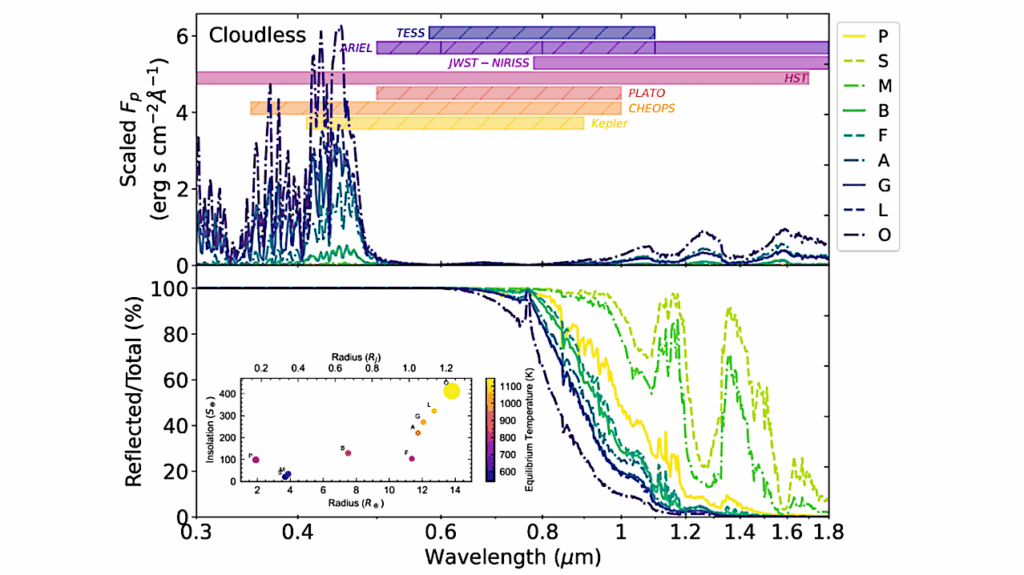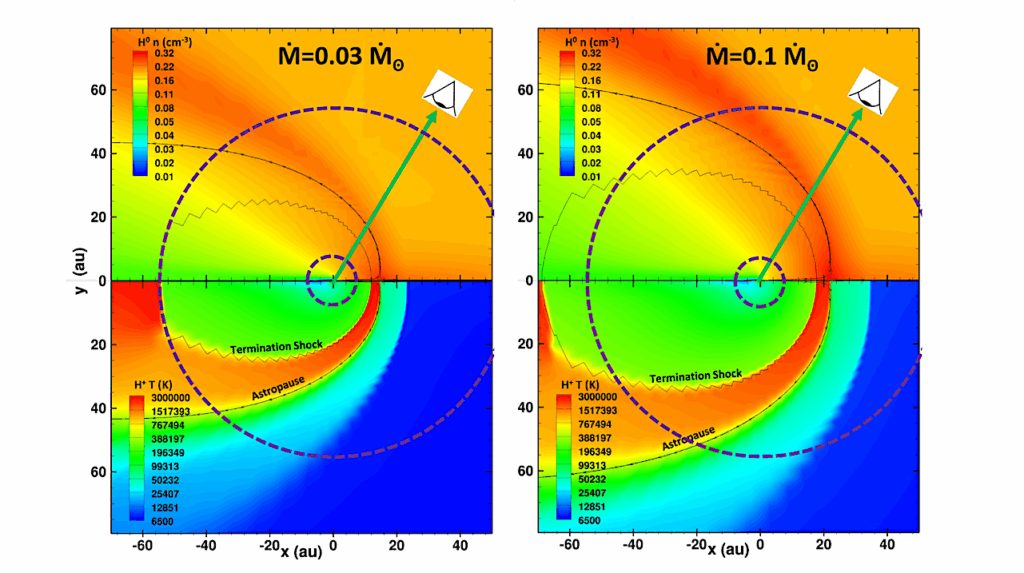Inferring Shallow Surfaces On sub-Neptune Exoplanets With JWST

Planets smaller than Neptune and larger than Earth make up the majority of the discovered exoplanets. Those with H2-rich atmospheres are prime targets for atmospheric characterization.
The transition between the two main classes, super-Earths and sub-Neptunes, is not clearly understood as the rocky surface is likely not accessible to observations. Tracking several trace gases (specifically the loss of ammonia (NH3) and hydrogen cyanide (HCN)) has been proposed as a proxy for the presence of a shallow surface. In this work, we revisit the proposed mechanism of nitrogen conversion in detail and find its timescale on the order of a million years. NH3 exhibits dual paths converting to N2 or HCN, depending on the UV radiation of the star and the stage of the system.
In addition, methanol (CH3OH) is identified as a robust and complementary proxy for a shallow surface. We follow the fiducial example of K2-18b with a 2D photochemical model (VULCAN) on an equatorial plane. We find a fairly uniform composition distribution below 0.1 mbar controlled by the dayside, as a result of slow chemical evolution. NH3 and CH3OH are concluded to be the most unambiguous proxies to infer surfaces on sub-Neptunes in the era of the James Webb Space Telescope (JWST).
Shang-Min Tsai, Hamish Innes, Tim Lichtenberg, Jake Taylor, Matej Malik, Katy Chubb, Raymond Pierrehumbert
Comments: Accepted for publication in ApJL
Subjects: Earth and Planetary Astrophysics (astro-ph.EP)
Cite as: arXiv:2111.06429 [astro-ph.EP] (or arXiv:2111.06429v1 [astro-ph.EP] for this version)
Submission history
From: Shang-Min Tsai
[v1] Thu, 11 Nov 2021 19:21:06 UTC (1,649 KB)
https://arxiv.org/abs/2111.06429
Astrobiology








